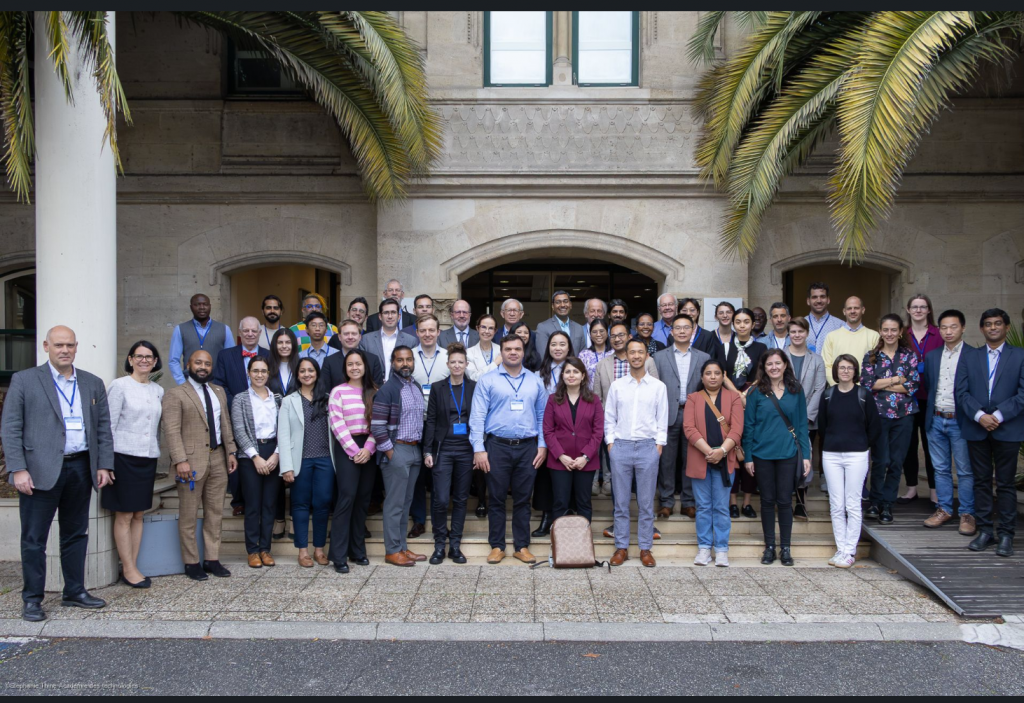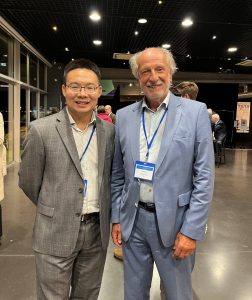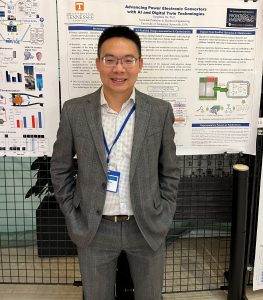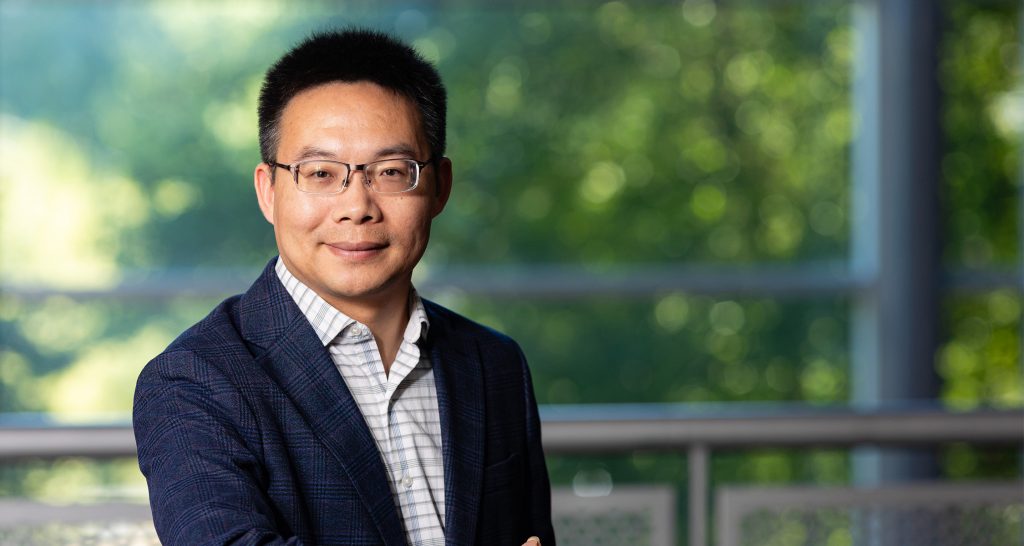Cross-Disciplinary Inspiration at EU-US Frontiers of Engineering
Associate Professor JiangBiao He just returned from a visit to Bordeaux, France. Rather than sampling the local vintages, though, he was focused on the cutting edge of technology as an attendee of the 2025 European Union-United States (EU-US) Frontiers of Engineering Symposium (FOE).
He was one of only 30 American engineers invited by the US National Academy of Engineering (NAE) to attend and present there.
“When I got the invitation, I was very honored and excited,” said He, an expert in power electronics and motor drives, an area that includes traction drives and chargers for transportation vehicles, power supplies for data centers, and other emerging applications. “This symposium is special because the people are not just from different countries, but all different engineering domains—which means they ask questions and trigger ideas I’ve never thought of before.”
Every one to two years, the US National Academy of Engineering and the European Council of Applied Sciences, Technologies, and Engineering co-host this invitation-only symposium, bringing together outstanding early to mid-career engineers from academia, industry, and government to discuss pressing issues and new developments with broad engineering impacts.
Being invited to the extremely exclusive symposium—attendance is capped at just 60, including speakers and organizers—is one of the most prestigious honors early and mid-career engineers in the US and Europe can receive.

“Usually, when you go to a conference, it’s about the same topics that you have been working on and almost everyone is from the same domain,” said He, who was invited by the NAE. “But power electronics is usually just one key component of a big engineering system. If we only focus on our own research area, there will be gaps when we integrate the system. This kind of cross-disciplinary symposium helps us bridge that gap between domains so we can push technology forward and make it much better overall.”
Throughout the symposium, which ran from October 20–23, 2025, participants presented posters based on their own research, heard speakers, and conducted in-depth discussions on four areas of focus: cryptography and distributed consensus systems; the future of wireless communications; a circular economy for polymers; and creating an Internet of Things (IoT) for medical and biological applications.
Tailored Polymers
Though he enjoyed the entire symposium program, He was most excited to learn and brainstorm how polymer science and wireless connectivity networks could contribute to the future of power electronics.
“For a lot of power electronic systems, we need to use polymer materials that have certain properties, like thermal management or electrical insulation,” explained He. “Attending this symposium gave me a great opportunity to understand the new technologies in the area of polymer science and how I could leverage these to advance the development of power electronics.”
He connected with many polymer scientists at the symposium, and he hopes their continuing discussions will foster multi-disciplinary research collaborations. He is especially excited to explore smart manufacturing methods that could tailor polymers to power electronics applications.
Future IoT-Enabled Power Electronics
Wireless connections between devices, which enable interconnected control networks known as the Internet of Things (IoT), were a particular focus of the symposium.
IoT consumer devices are interconnected and controllable from wireless devices, allowing users to remotely turn on their electric vehicles or home appliances from cell phone apps. He had an intensive discussion about unique applications of IoT with several colleagues in the symposium, including Todd Coleman, an associate professor of bioengineering and electrical engineering at Stanford University.


“Todd’s focus is on electrical engineering applied to biomedical systems,” said He. “We had a great discussion that really broadened my understanding of how we can push power electronics with IoT technologies.”
He now envisions mobile phone or computer software monitoring the health of power electronics systems in everything from electric cars and household robots to smart grids, helping users and engineers make informed decisions about how to operate such electric systems more efficiently or when to schedule maintenance and repairs.
“Overall, I would like to make the area of power electronics more intelligent, more automated, and more optimized through digital technologies,” He said, “and my key takeaway from this symposium was that that’s possible.”
Contact
Izzie Gall (egall4@utk.edu)
